Abstract
Although we have identified many variables that affect antisocial behavior, there is no evidence that we have learned how to reduce the incidence of such behavior or the proportion of young people who repeatedly engage in antisocial behavior. It is appropriate, therefore, for behavioral scientists to turn some of their energies to research on reducing the incidence and prevalence of antisocial behavior. Small communities may be a particularly useful social unit in which to conduct experimental research. The interventions to be tested include advocacy and community organizing to influence communities to make validated school and clinical interventions widely available and to assist them in increasing other forms of supervision of young people and social and material support of families. Key components of advocacy and community organizing are suggested, and possibilities for research are described.
Full text
PDF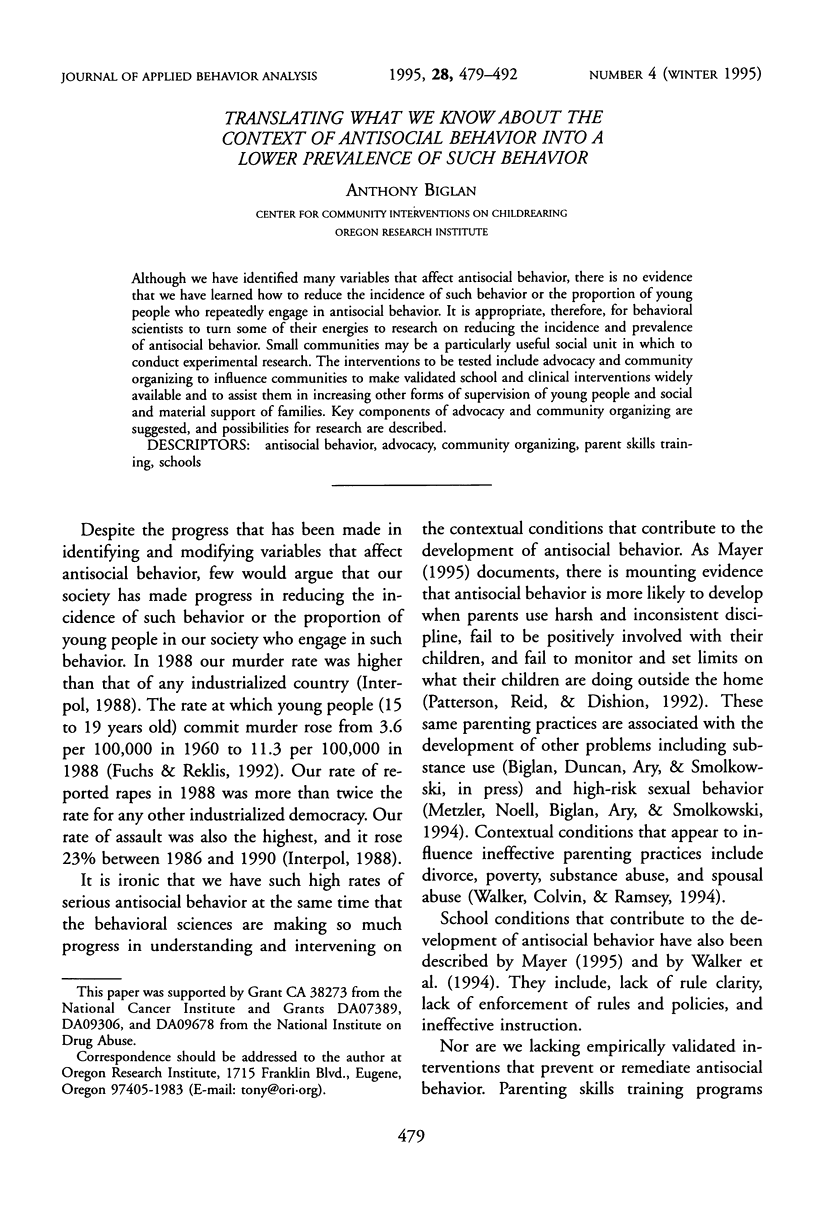
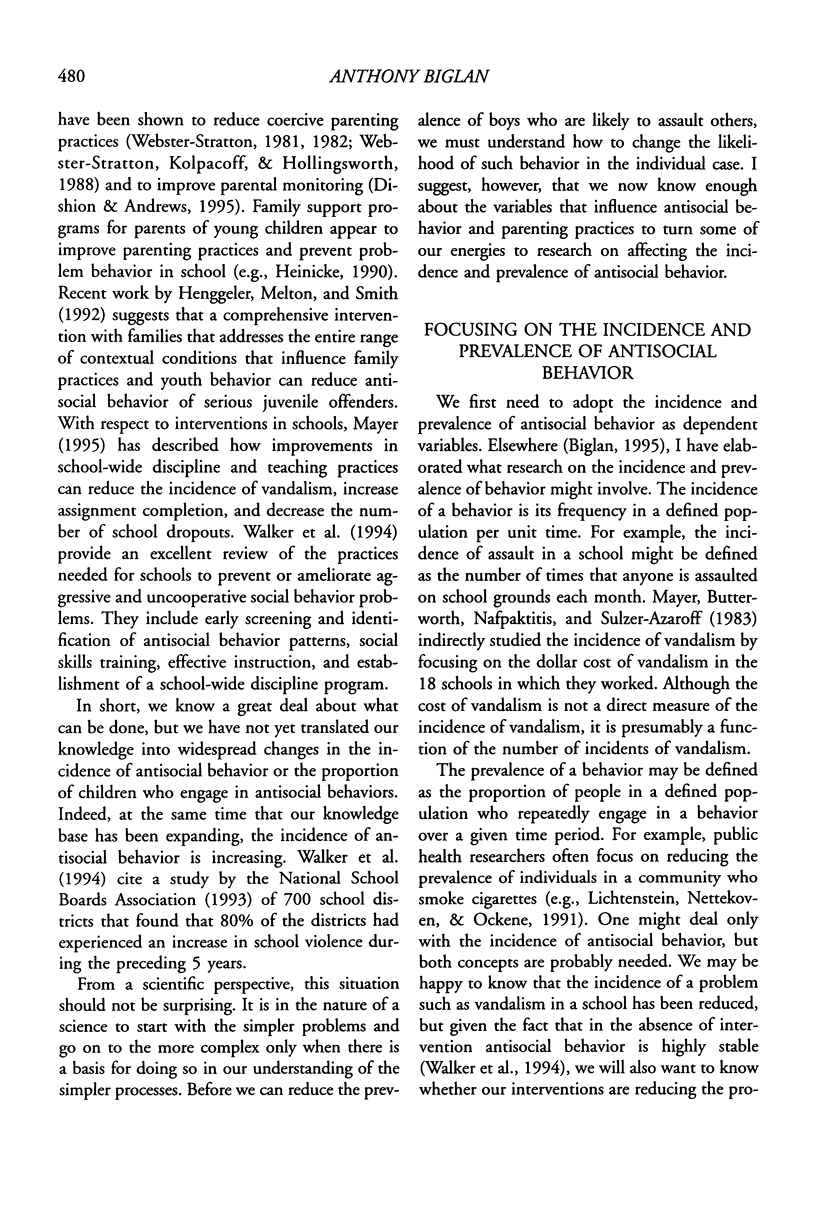
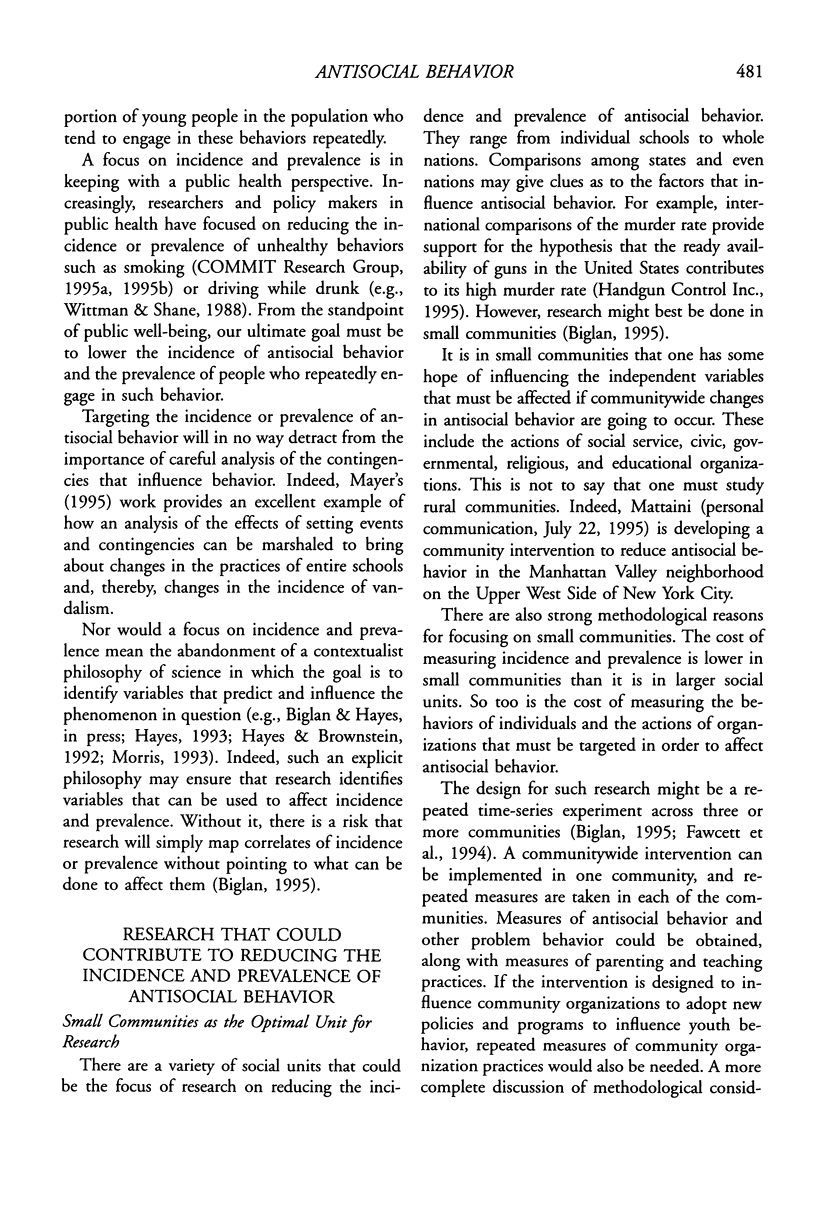
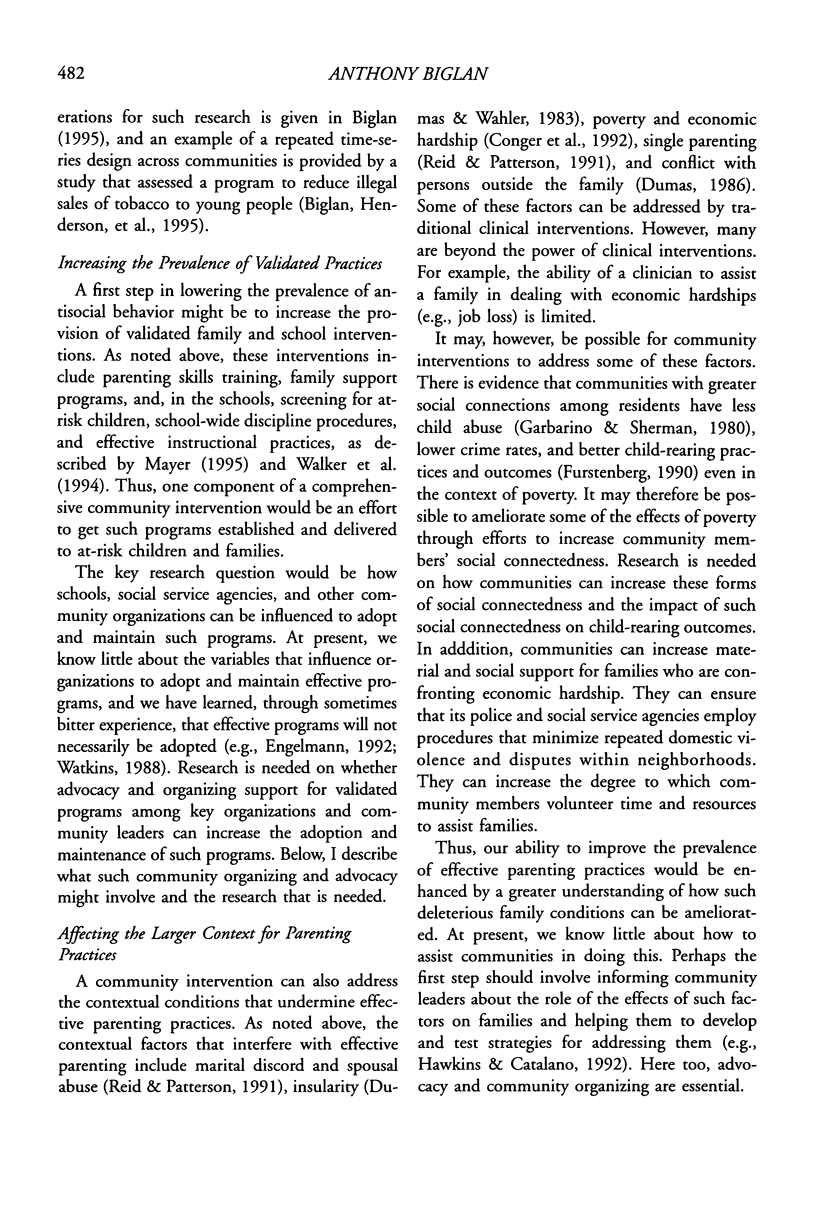
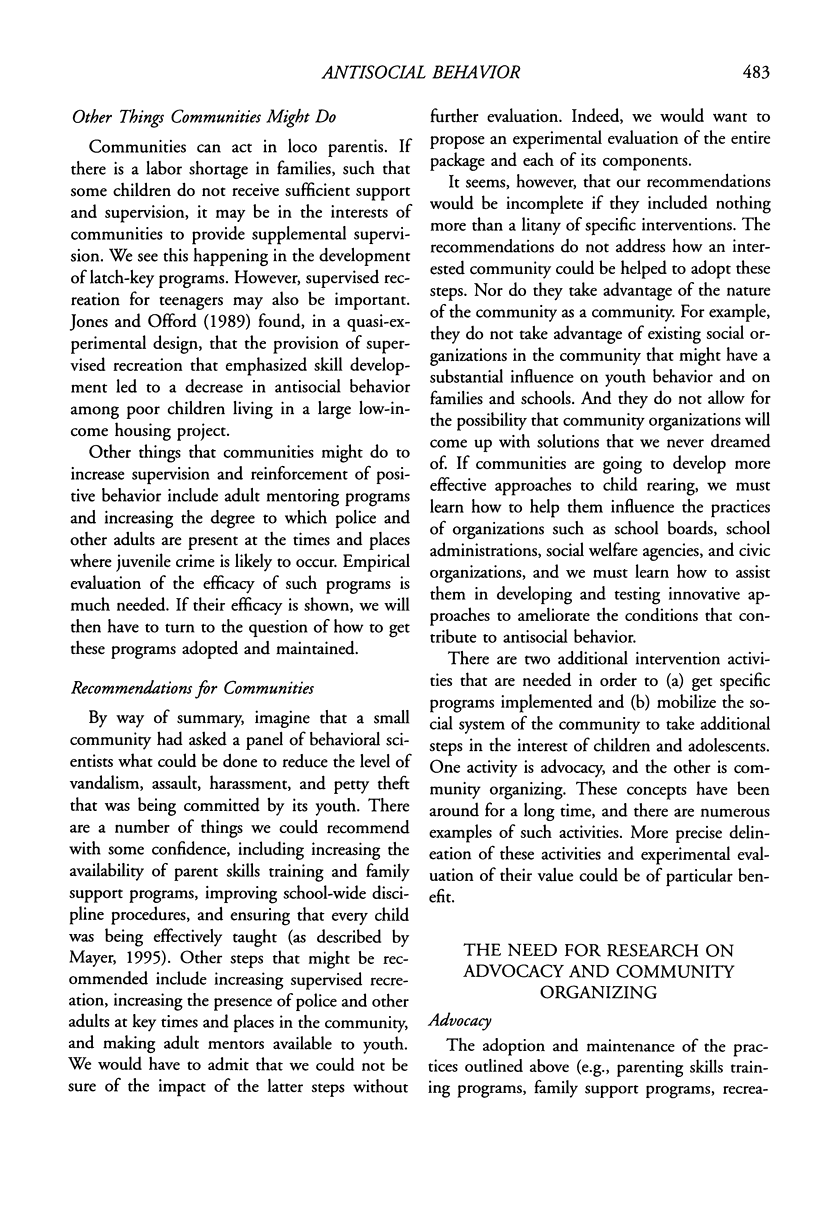
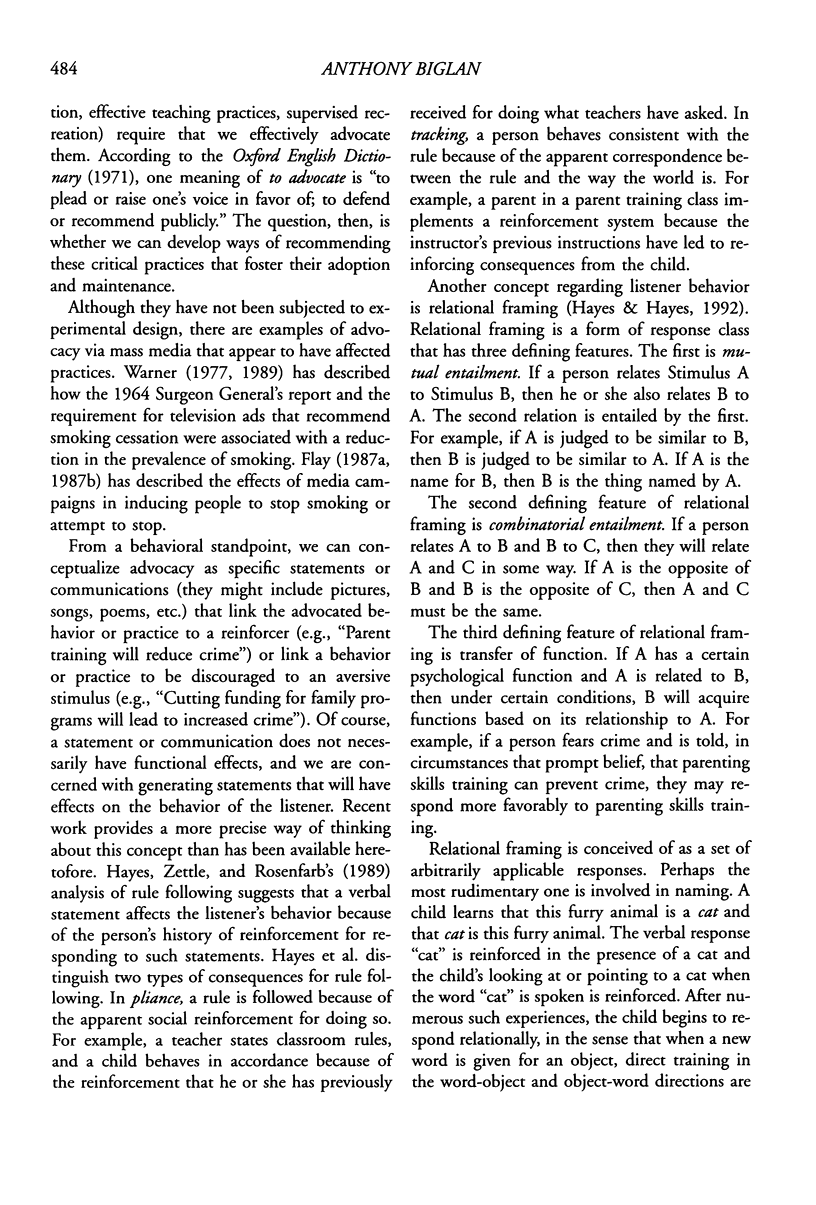
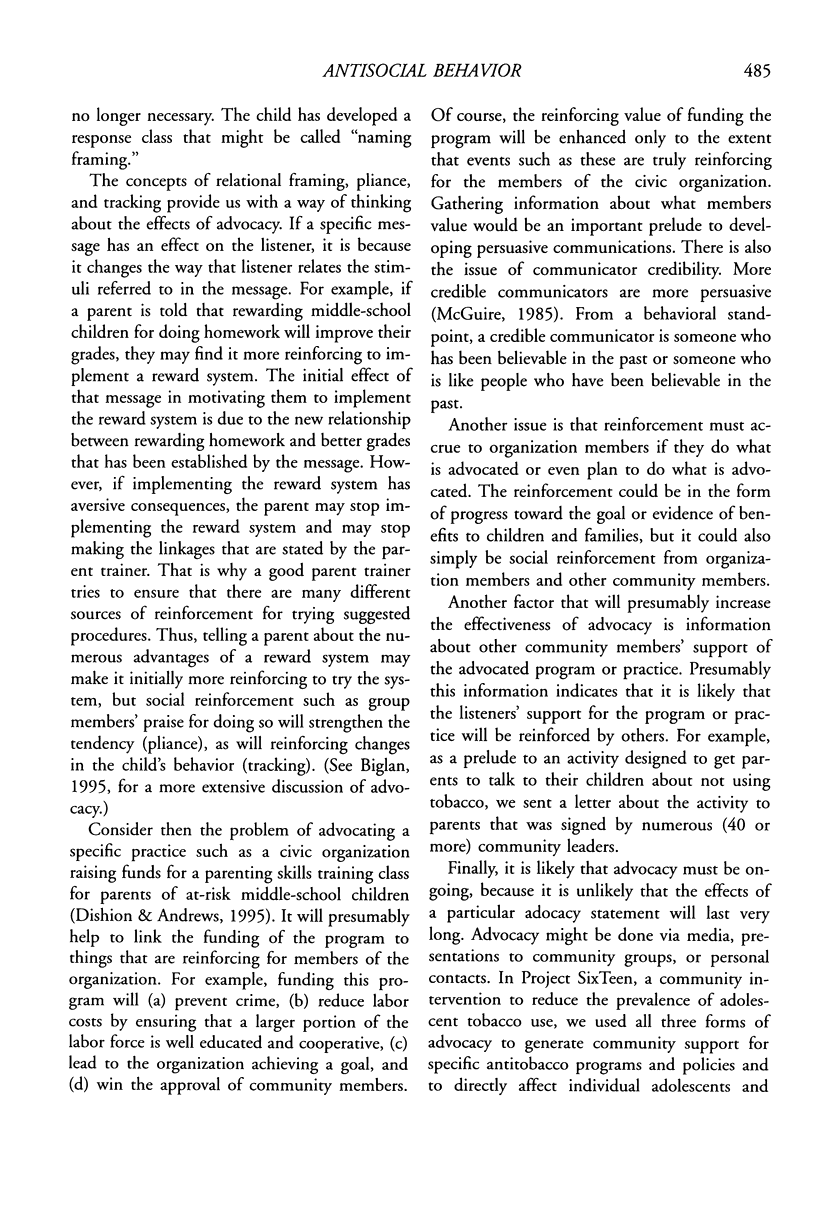
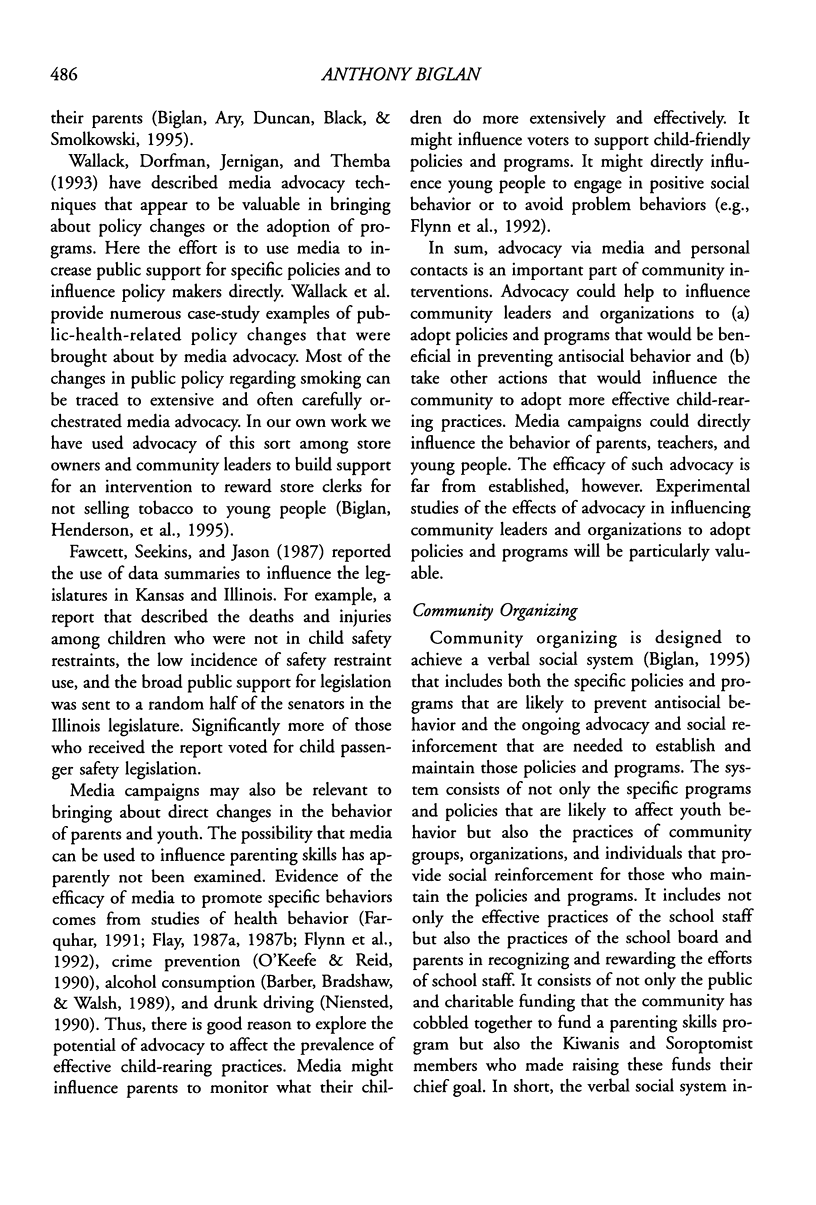
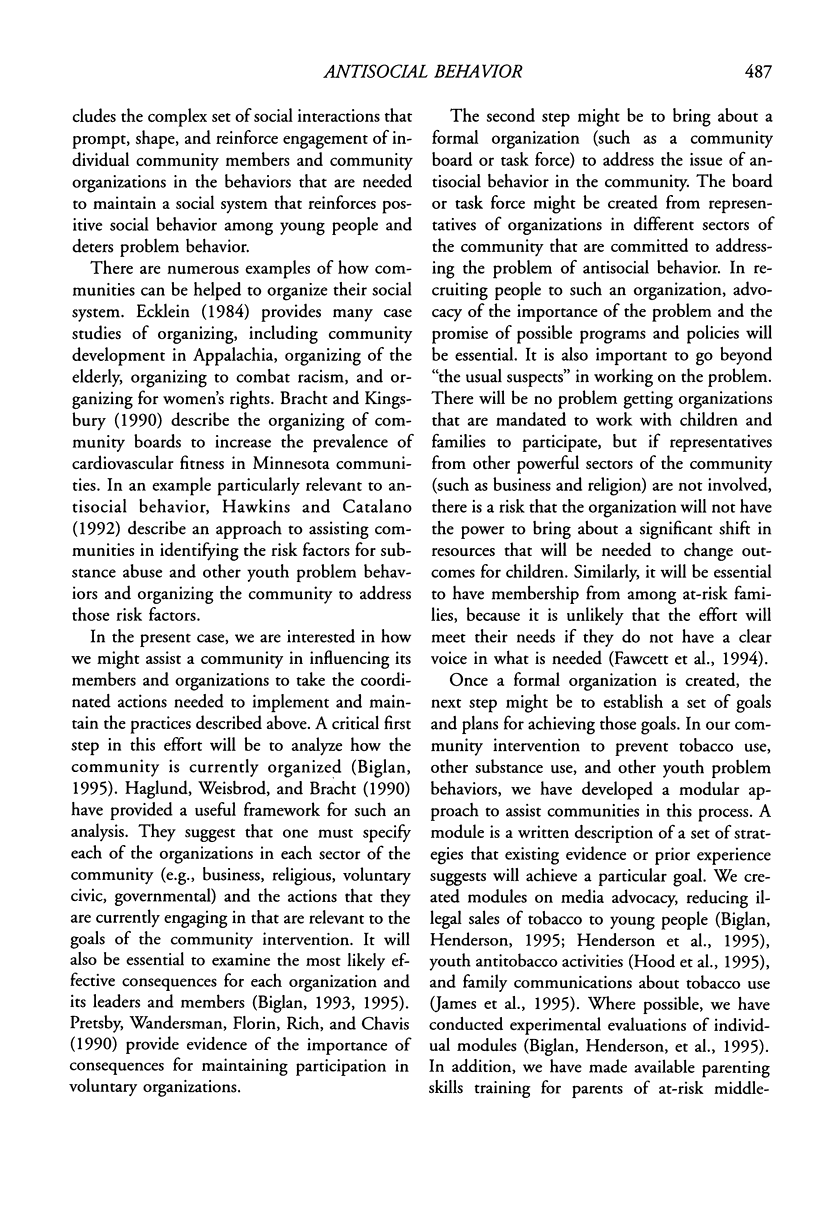
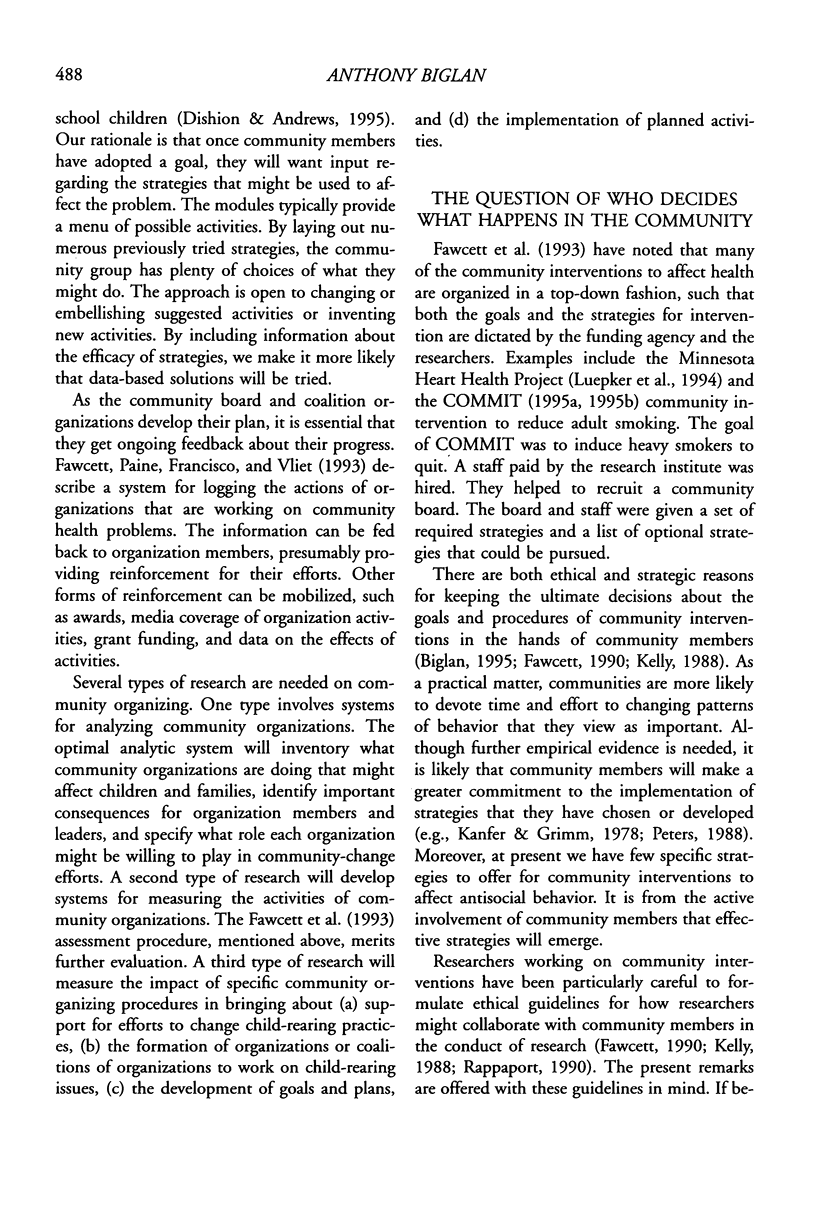
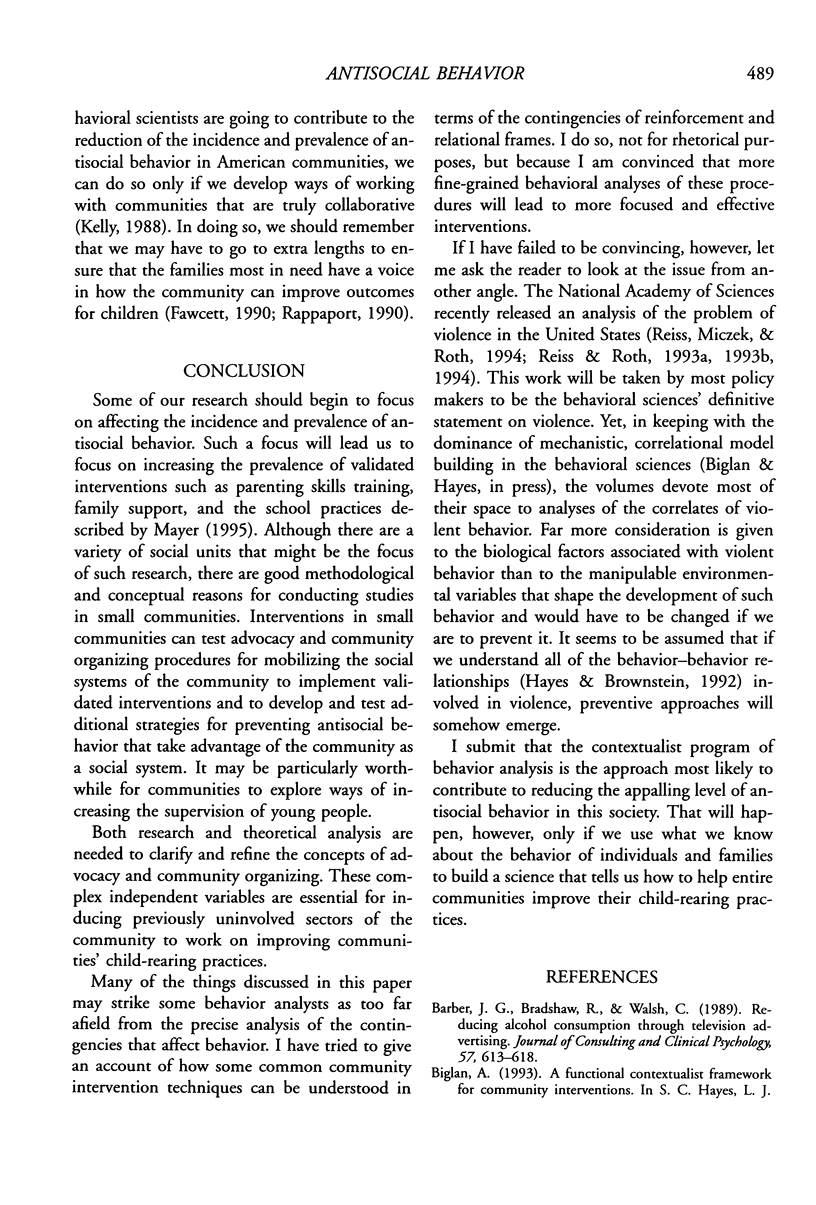
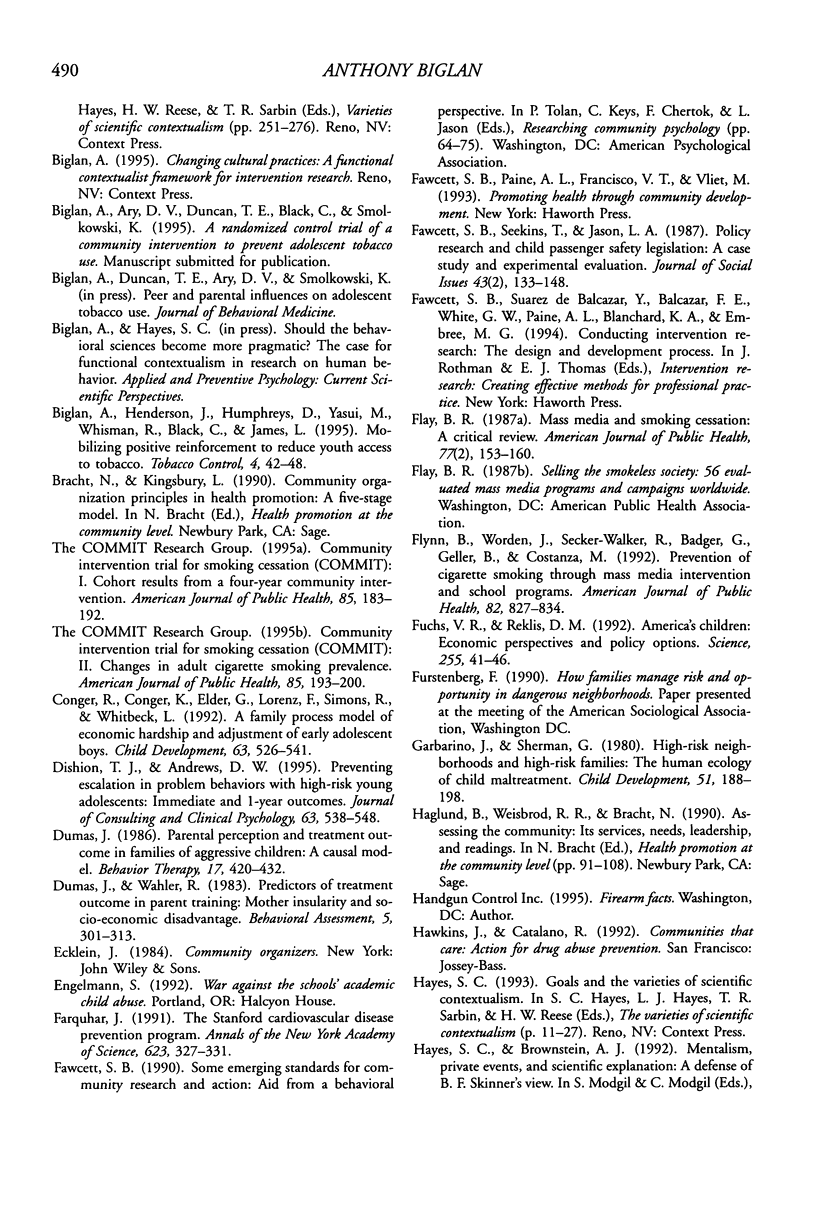
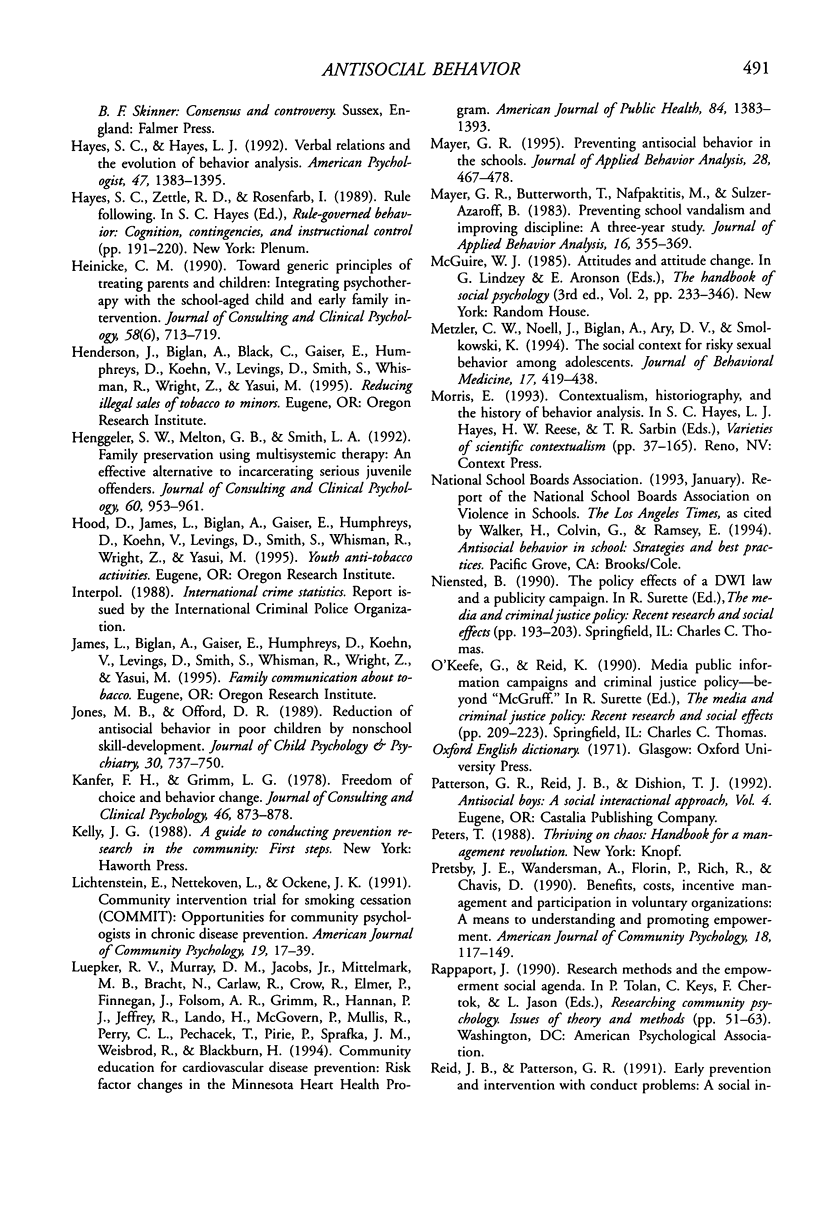
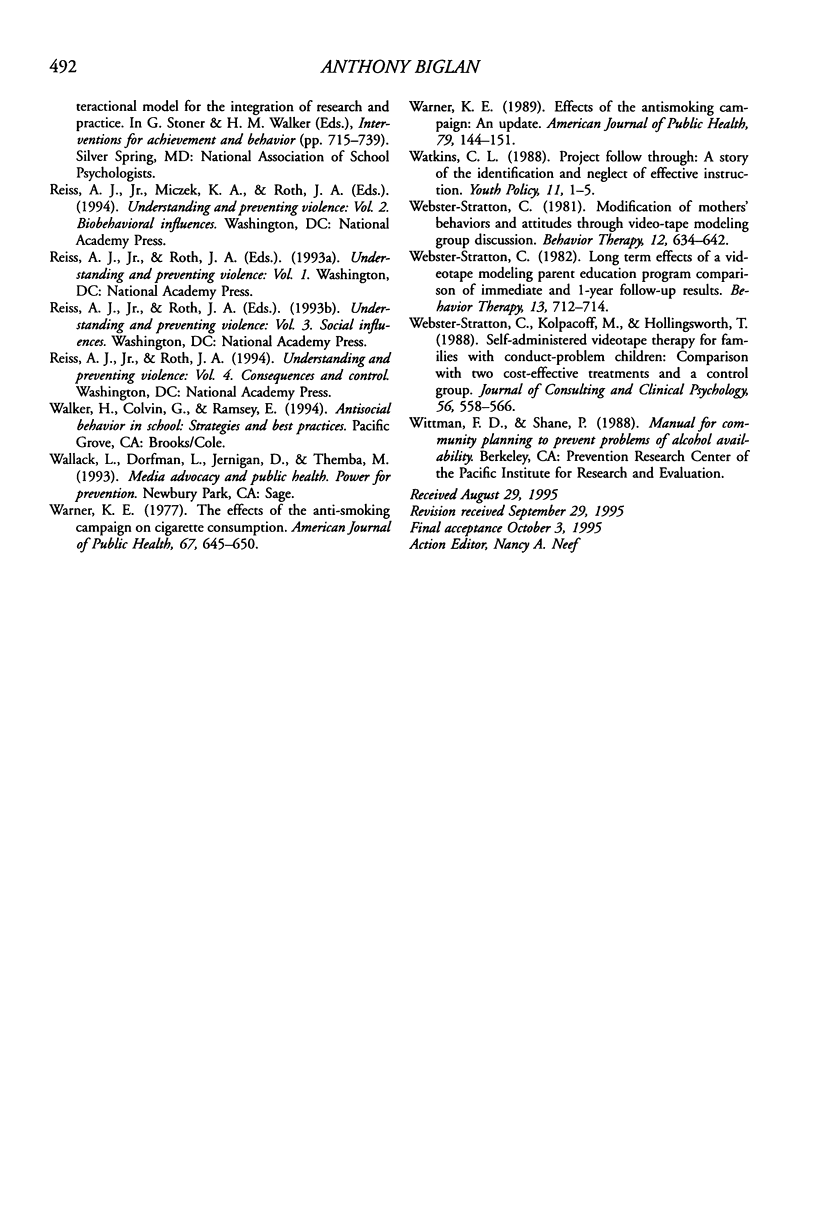
Selected References
These references are in PubMed. This may not be the complete list of references from this article.
- Barber J. G., Bradshaw R., Walsh C. Reducing alcohol consumption through television advertising. J Consult Clin Psychol. 1989 Oct;57(5):613–618. doi: 10.1037//0022-006x.57.5.613. [DOI] [PubMed] [Google Scholar]
- Conger R. D., Conger K. J., Elder G. H., Jr, Lorenz F. O., Simons R. L., Whitbeck L. B. A family process model of economic hardship and adjustment of early adolescent boys. Child Dev. 1992 Jun;63(3):526–541. doi: 10.1111/j.1467-8624.1992.tb01644.x. [DOI] [PubMed] [Google Scholar]
- Dishion T. J., Andrews D. W. Preventing escalation in problem behaviors with high-risk young adolescents: immediate and 1-year outcomes. J Consult Clin Psychol. 1995 Aug;63(4):538–548. doi: 10.1037//0022-006x.63.4.538. [DOI] [PubMed] [Google Scholar]
- Flay B. R. Mass media and smoking cessation: a critical review. Am J Public Health. 1987 Feb;77(2):153–160. doi: 10.2105/ajph.77.2.153. [DOI] [PMC free article] [PubMed] [Google Scholar]
- Flynn B. S., Worden J. K., Secker-Walker R. H., Badger G. J., Geller B. M., Costanza M. C. Prevention of cigarette smoking through mass media intervention and school programs. Am J Public Health. 1992 Jun;82(6):827–834. doi: 10.2105/ajph.82.6.827. [DOI] [PMC free article] [PubMed] [Google Scholar]
- Fuchs V. R., Reklis D. M. America's children: economic perspectives and policy options. Science. 1992 Jan 3;255(5040):41–46. doi: 10.1126/science.1553531. [DOI] [PubMed] [Google Scholar]
- Garbarino J., Sherman D. High-risk neighborhoods and high-risk families: the human ecology of child maltreatment. Child Dev. 1980 Mar;51(1):188–198. [PubMed] [Google Scholar]
- Heinicke C. M. Toward generic principles of treating parents and children: integrating psychotherapy with the school-aged child and early family intervention. J Consult Clin Psychol. 1990 Dec;58(6):713–719. doi: 10.1037//0022-006x.58.6.713. [DOI] [PubMed] [Google Scholar]
- Henggeler S. W., Melton G. B., Smith L. A. Family preservation using multisystemic therapy: an effective alternative to incarcerating serious juvenile offenders. J Consult Clin Psychol. 1992 Dec;60(6):953–961. doi: 10.1037//0022-006x.60.6.953. [DOI] [PubMed] [Google Scholar]
- Jones M. B., Offord D. R. Reduction of antisocial behavior in poor children by nonschool skill-development. J Child Psychol Psychiatry. 1989 Sep;30(5):737–750. doi: 10.1111/j.1469-7610.1989.tb00786.x. [DOI] [PubMed] [Google Scholar]
- Kanfer F. H., Grimm L. G. Freedom of choice and behavioral change. J Consult Clin Psychol. 1978 Oct;46(5):873–878. doi: 10.1037//0022-006x.46.5.873. [DOI] [PubMed] [Google Scholar]
- Lichtenstein E., Nettekoven L., Ockene J. K. Community Intervention Trial for Smoking Cessation (COMMIT): opportunities for community psychologists in chronic disease prevention. Am J Community Psychol. 1991 Feb;19(1):17–39. doi: 10.1007/BF00942251. [DOI] [PubMed] [Google Scholar]
- Luepker R. V., Murray D. M., Jacobs D. R., Jr, Mittelmark M. B., Bracht N., Carlaw R., Crow R., Elmer P., Finnegan J., Folsom A. R. Community education for cardiovascular disease prevention: risk factor changes in the Minnesota Heart Health Program. Am J Public Health. 1994 Sep;84(9):1383–1393. doi: 10.2105/ajph.84.9.1383. [DOI] [PMC free article] [PubMed] [Google Scholar]
- Mayer G. R., Butterworth T., Nafpaktitis M., Sulzer-Azaroff B. Preventing school vandalism and improving discipline: a three-year study. J Appl Behav Anal. 1983 Winter;16(4):355–369. doi: 10.1901/jaba.1983.16-355. [DOI] [PMC free article] [PubMed] [Google Scholar]
- Mayer G. R. Preventing antisocial behavior in the schools. J Appl Behav Anal. 1995 Winter;28(4):467–478. doi: 10.1901/jaba.1995.28-467. [DOI] [PMC free article] [PubMed] [Google Scholar]
- Metzler C. W., Noell J., Biglan A., Ary D., Smolkowski K. The social context for risky sexual behavior among adolescents. J Behav Med. 1994 Aug;17(4):419–438. doi: 10.1007/BF01858012. [DOI] [PubMed] [Google Scholar]
- Warner K. E. Effects of the antismoking campaign: an update. Am J Public Health. 1989 Feb;79(2):144–151. doi: 10.2105/ajph.79.2.144. [DOI] [PMC free article] [PubMed] [Google Scholar]
- Warner K. E. The effects of the anti-smoking campaign on cigarette consumption. Am J Public Health. 1977 Jul;67(7):645–650. doi: 10.2105/ajph.67.7.645. [DOI] [PMC free article] [PubMed] [Google Scholar]
- Webster-Stratton C., Kolpacoff M., Hollinsworth T. Self-administered videotape therapy for families with conduct-problem children: comparison with two cost-effective treatments and a control group. J Consult Clin Psychol. 1988 Aug;56(4):558–566. doi: 10.1037//0022-006x.56.4.558. [DOI] [PubMed] [Google Scholar]


